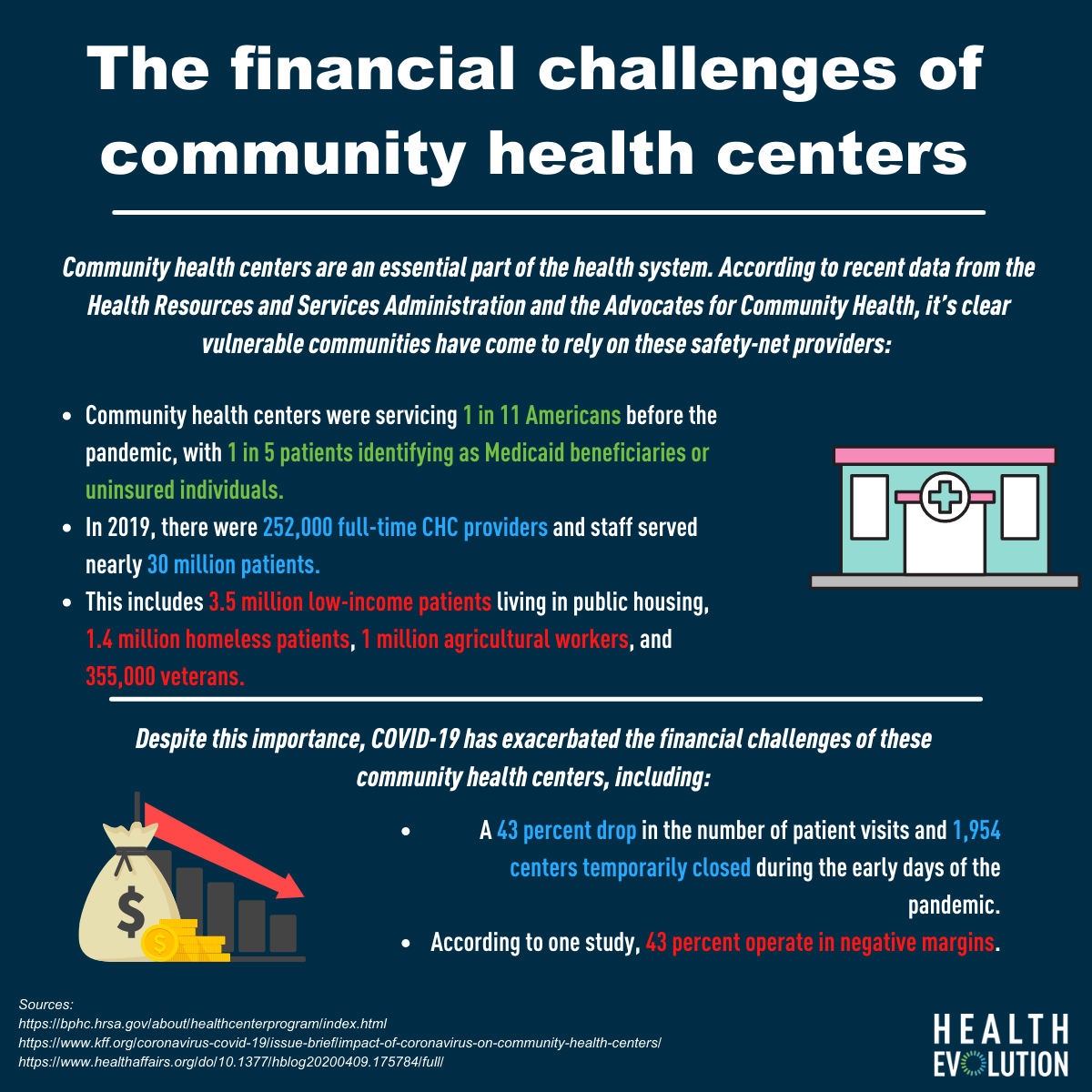The impact of community health centers has been evident throughout the COVID-19 pandemic.
Safety-net providers are delivering COVID-19 tests, triaging patients, and reducing the burden on hospitals for vulnerable communities, according to an analysis by Kaiser Family Foundation. In fact, people of color represent more than half of those who tested and had confirmed cases of COVID at community health centers.
According to recent data from the Advocates for Community Health, community health centers were servicing 1 in 11 Americans before the pandemic, with 1 in 5 patients identifying as Medicaid beneficiaries or uninsured individuals. In 2019, the more than 252,000 full-time CHC providers and staff served nearly 30 million patients. This includes 3.5 million low-income patients living in public housing, 1.4 million homeless patients, 1 million agricultural workers, and 355,000 veterans. In the past few years, community health centers have seen a 31 percent increase in the number of patients they serve, according to a Health Affairs study.
Yet, these community health centers saw a 43 percent drop in the number of patient visits and 1,954 centers temporarily closed during the early days of the pandemic, according to KFF. In general, many community health centers rely on federal funds as federally qualified health centers, which means they have tight profit margins, if any at all. According to the Health Affairs study, 43 percent operate in negative margins.
“No philanthropic organization—government or otherwise—likes to pay for your overhead. They will pay for programs and make sure funds go into the community. But they don’t like giving you money to support your HR department, to expand or modernize your IT systems. They don’t want to pay for legal expenses or accounting. The government has a fixed percentage on those services, which doesn’t cover it all,” says Katy Caldwell, CEO of Houston-based Legacy Community Health, the largest federally-qualified health center in Texas.
More resources needed
Don McDaniel, CEO, Canton & Company, says that when FQHCs find ways to succeed, it can have a monumental impact on the community. These health centers often provide integrated primary care and behavioral health services that are critical in their communities, which lack those kinds of resources.
“The Health Resources and Services Administration has said they would like FQHCs to be more self-sustaining and less reliant on federal funds. A major reason why that’s hard is because FQHCs take care of a lot of uninsured or underinsured patients. But the better performing ones can do even more for their communities,” says McDaniel. “A lot of health centers realize they do good work and if they could do a little bit more, they could be even more successful and more impactful in their communities.”
Canton & Company and Legacy Health recently collaborated to launch Monarch Health Solutions to provide business strategy, analytics, insights, and managed services to the 1,300-plus FQHCs across the country. Legacy, which offers primary, specialty and behavioral health services throughout the Texas Gulf Coast region, has seen firsthand that just a few percentage points increase in the collection of Medicare, Medicaid and private insurance fees can provide huge dividends for the FQHC.
Like any health care provider, FQHCs need modern IT infrastructure, recruiting resources, a deep understanding of regulatory and compliance environment, and the ability to maximize revenue to succeed. Unlike other providers though, FQHCs don’t always have the resources to deal with those pain points. In particular, IT infrastructure is an area where a lot of FQHCs lag behind, says Caldwell.
“You have to have the basics and that’s the struggle. We have at least gotten some funding from the federal government over the years, because it’s just a huge cash outlay, both for equipment and staff,” Caldwell says. McDaniel adds that the fact that EHRs and practice management systems aren’t really tailored to these health centers is another challenge.
“Vendors have gotten away with taking a little bit of a one-sized-fits all approach by taking their ambulatory systems and bastardizing them for community health centers. I’m sure vendors would take exception to that but it’s the truth,” McDaniel says. “The problem is that the operating requirements of an FQHC are different than other ambulatory providers and what you’re required to do from a reporting standpoint is complicated.”
Value-based care
Along with the aforementioned challenges FQHCs face with tech, revenue, HR and operations, there is also the move to value-based care, which is becoming increasingly prevalent in all sects of the health care system.
If it’s done correctly, investing in a value-based arrangement can pay dividends for FQHCs. One study from researchers at Johns Hopkins found that a value-based partnership between seven Maryland FQHCs, a community hospital and a managed care organization yielded a combined $19.4 million in total cost savings over three years.
The COVID-19 pandemic revealed an increased urgency for these health care providers to switch out of the fee-for-service environment, which proved detrimental to their bottom line when people stopped going to the doctor.
McDaniel said that while FQHCs and other community health centers work toward improving operations, technology, support systems, HR and other business functions, they need to strive toward a value-based care mindset.
“Quality. Value. Cost. There are not many FQHCs that have operated in total cost of care environments,” says McDaniel.
Homepage image: LegacyCommunityHealth.org











